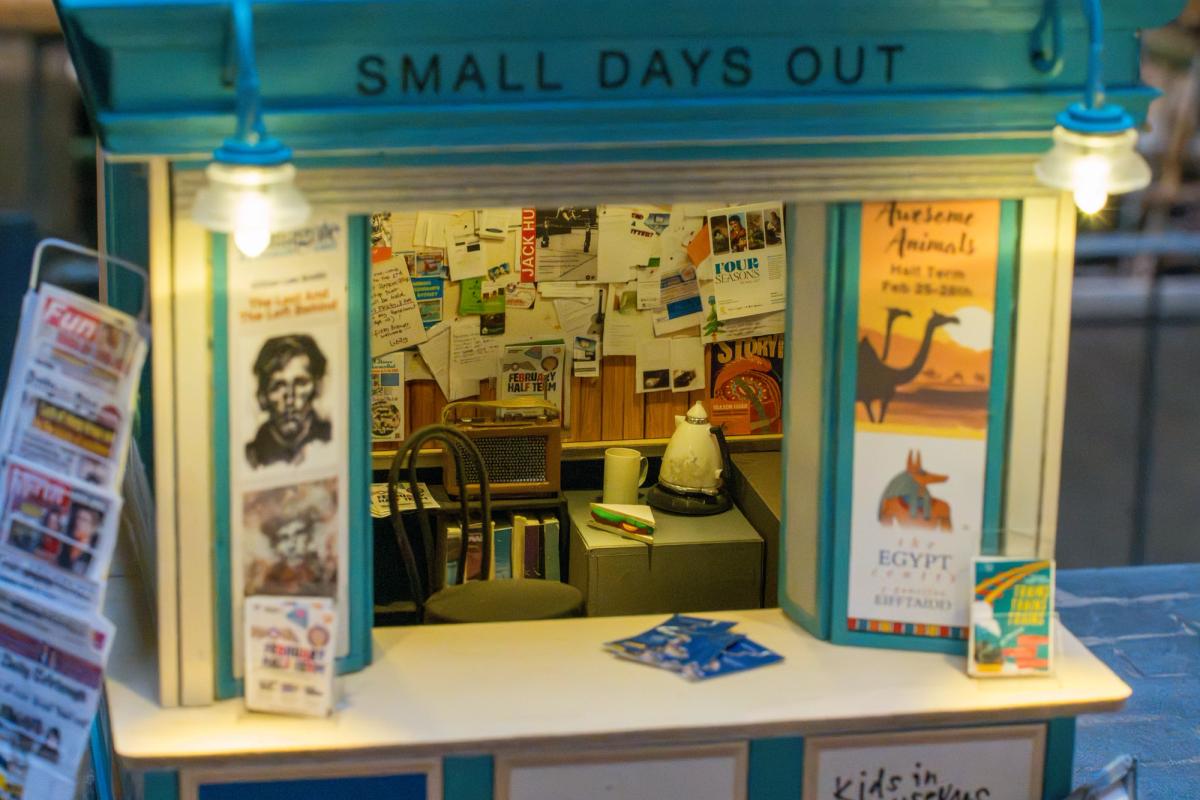Three in five small museums and galleries in the UK fear closure amid declining revenue and footfall, research published this week suggests. The survey of 40 small, independent attractions—those with fewer than 100,000 annual visitors—also found that four in five (78%) reported the current period as the most challenging the sector has faced, while over half (58%) said overall income has not returned to its pre-Covid levels.
The research, conducted by the cloud platform GoDaddy in partnership with the charity Kids in Museums, surveyed small museums as well as galleries, historic buildings and heritage sites. Alison Bowyers, the executive director of Kids in Museums, tells The Art Newspaper that UK museums are suffering more than their counterparts in mainland Europe.
She says: “In the UK, the overall trend has been for a slower recovery in museum visitor numbers post pandemic than in other European countries. In 2023, a number of European countries including France, Spain, the Netherlands and Iceland saw record numbers of museum visitors.
“In England, research shows that overall visitor numbers are still 8% lower than pre-pandemic levels. The smallest museums and museums outside London, particularly in the North and Midlands, are the furthest away from achieving pre-pandemic numbers.”
Asked why the UK has fallen behind its European neighbours, Bowyer says it’s hard to identify a single factor that has slowed the UK recovery, but lists the unequal impact of the cost of living crisis and investment in the arts as possible contributing factors. This is supported by the newly released research, which found that two thirds (64%) of respondents said footfall had declined due to the cost of living, while 61% had seen a decline in visitor spend.
Bowyers says: “Financial strain on households and the cost of visiting a museum, even if admission is free, have become the most significant barrier to visits in the past few years. The cost of living crisis hit the UK more severely than other European nations and was spread more unequally, with those on the lowest incomes hit the hardest. The impact of the cost of living crisis also caused a significant decline in school trips to museums.
“The collision of the pandemic, Brexit and the cost of living crisis came after a decade of underinvestment in UK museums. While some European governments also cut costs, the overall level of public investment in culture in Europe remained significantly higher.”
Responding to this “collision”, one in five (22%) of organisations surveyed reported having to reduce programming to protect their future, while 17% said they have reduced the days they open.
Bowyers also cites 2024 polling from YouGov, which showed that three quarters of UK adults think that having a local museum adds value to their local area, and over half would be disappointed if their local museum closed. This survey also shows strong support for public funding for museums.
She says there’s more that national and local governments can do to support the sector: “Local authority funding is a huge issue for a large number of smaller museums. A fair, long-term funding settlement for local government is vital for the future of these museums. As well as continuing to invest, local authorities can support smaller museums in other ways such as marketing, advocacy, transport and accessibility. Small changes can make a big difference."
Hannah Harte, director of one such small museum, the London Museum of Water and Steam, says: “Museums like ours are valuable community resources, bringing topics like history, science, and engineering to life…Despite our best efforts, footfall remains 20-25% below pre-pandemic levels, and rising operational costs make it harder than ever to keep our doors open.”
Earlier this week the London Museum of Water and Steam was announced as a recipient of £2.6m as part of the UK government's £270m funding package for cash-strapped cultural venues. The package includes money earmarked for regional museums in need of “urgent need of financial support” via initiatives including the £4.85m Heritage Revival Fund and the fifth round of the Museum Estate and Development Fund, which will provide £25m for local museums across the UK.


